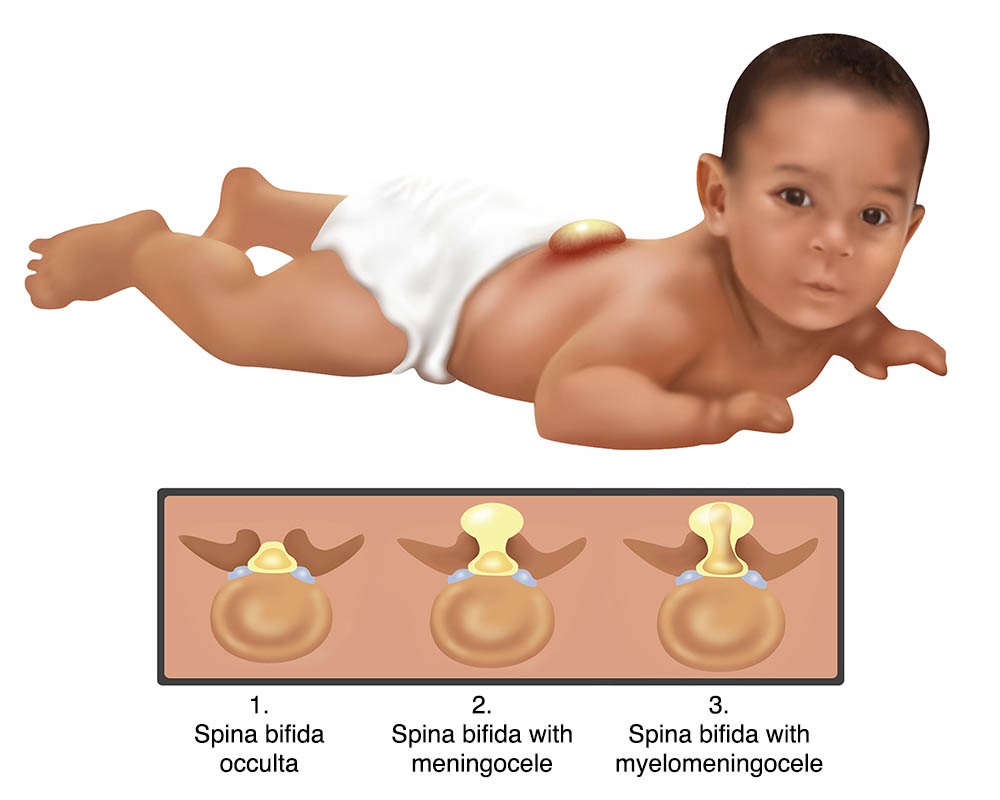
Spina bifida is a birth defect where the spine and spinal cord do not form properly in the womb. The neural tube which eventually becomes the baby’s brain, spinal cord and tissues, does not form properly leading to neural tube defect. The word spina bifida means ‘split spine’ which does not close all the way and may cause physical and mental issues.
Combinations of genetic, nutritional and environmental reasons are accounted as causes for spina bifida. These risk factors include folate deficiency, family history, anti-seizure medications, diabetes, obesity and increased body temperature.
The severity of complications and disabilities are affected by size and location of neural tube defect, the skin covering the affected area and spinal nerves coming out of the affected area of the spinal cord. Not all children with spina bifida experience these complications, which can be treated.
The orthopaedic complications associated with spina bifida include curved spine, abnormal growth, dislocation of hip, bone and joint deformities and muscle contractures. Other complications are walking and mobility issues, hydrocephalus or accumulation of fluid in the brain, shunt malfunction, chiari malformation type II, infection in tissues surrounding meningitis, tethered spinal cord, sleep disordered breathing, skin problems, latex allergy, urinary tract infections, gastrointestinal disorders and depression. Due to meningitis or infection in tissue surrounding the brain, children may develop learning disabilities including paying attention.
Ensuring enough folic acid in the early weeks of pregnancy and planning diet during pregnancy could avert possibilities of this disability.
Types of spina bifida include occulta, closed neural tube defects, meningocele and myelomeningocele. Symptoms of spina bifida differ according to type and intensity.
Spina bifida occulta is the mildest of all and is hidden and not spotted till late childhood or adulthood. There is a small gap in the spine, but opening or sac in the back is absent. The spinal cord and nerves appear to be normal and do not cause any disabilities.
In meningocele type, a sac of fluid comes through an opening in the baby’s back. Besides little or no nerve damage, the spinal cord is not in this sac and this type causes minor disabilities like defect in the base of the skull. Surgery must be performed within two days of birth and infection must be prevented. The excess buildup of spinal fluid may lead to brain damage or blindness if left untreated.
Myelomeningocele is the most severe spina bifida which occurs when meninges and spinal cord push through the opening in the back. The complications may include traumatic birth and difficult delivery of the baby, frequent urinary tract infections, fluid accumulation in the brain, loss of bowel or bladder control, brain infection and permanent weakness or paralysis of legs. Repair can be done before birth or through surgery immediately after birth.
Closed neural tube defect is a complex disorder which is caused by genetic and environmental factors. The damage thus occurred may be corrected through surgical intervention.
Spina bifida can be diagnosed during pregnancy by measuring alpha-fetoprotein content through blood test, ultrasound test and through aminocentesis or testing sample of amniotic fluid around the baby in the womb. In rare cases, spina bifida may be diagnosed even after child birth.